– Good evening. I’m Sheri Castelnuovo, the Curator of Education, and on behalf of MMoCA’s staff and board of trustees, it’s my pleasure to welcome you to the Steven Fleischmann Lectureship, featuring Sonya Clark. The lectureship honors
the 25th anniversary of Steven Fleischmann’s tenure as Museum Director. Members of MMoCA’s Board of Trustees who served during that time, funded an endowment to provide for an annual lecture by individuals who have made exceptional contributions
to art and culture. Talks organized for the lectureship are held each year in April, and have free admission, in recognition of the museum’s dedication to providing access to opportunities for learning and enrichment.
We’re very fortunate to have, as our distinguished guest, Sonya Clark. Originally from Washington D. C. , and now residing in Amherst, Massachusetts, Sonya Clark is internationally celebrated for
conceptually sophisticated, finely crafted work, that builds upon familiar objects: a comb, beads, a dollar bill, a flag. As she has said, “Objects have personal “and cultural meaning, because they absorb our stories,
and reflect our humanity back to us. ” Prior to her current appointment a Professor of Art at Amherst College, Sonya was a distinguished research fellow in the School of the Arts, at Virginia
Commonwealth University where from 2006 into 2017, she served as chair for the Craft Material Studies Department. She also was a Baldwin Baskin Professor of Creative Arts at the University of Wisconsin-Madison from 2004 to 2006,
and was on the Design Studies faculty in the School of Human Ecology from 1997 to 2005. Among the honors she has received are the 2016 Virginia Commonwealth University’s Distinguished Scholars Award, an honorary doctorate of arts
from Amherst College in 2015, and a Distinguished Alumni Award from Cranbrook Academy of Art in 2011. She is the recipient of a United States Artist’s Fellowship, a Pollock Krasner Award, and an Anonymous Was A Woman Award among others,
and has held residencies in China, France, Italy, and the United States. Her work has been exhibited in over 350 museums and galleries in the Americas, Africa, Asia, Europe, and Australia, and appears in major
public collections, including the Indianapolis Museum of Art, the Montreal Museum of Fine Arts in Quebec, the Museum of Fine Arts Boston, and the Virginia Museum of Fine Arts Richmond. Sonya also holds a special place in MMoCA’s
institutional history. She served on the museum’s board of trustees from 2000 to 2003, and five of her sculptures from the wig series, are included in MMoCA’s permanent collection. These works reimagine the Fibonacci mathematical series
through the rituals and traditions of African and African American hairstyling, and embody Sonya’s exploration of race and identity through the interplay of material and process. So it’s with great pleasure that we welcome Sonya
Clark back to MMoCA. Please offer her a warm welcome. (audience applauds) – Thank you Sheri. (audience applauds) Hi, good evening. It’s so lovely to be here and to see so many familiar faces, so thank you for coming out.
It’s always nice to have a little bit of a homecoming. This evening I’m going to be jumping all over the map, in terms of, there won’t be any linear trajection. So, and there are no dates on the work, so you’ll just have to follow along.
(audience laughs) So I want to start by sharing with you this image, and this quote, or this thought. So James Baldwin referred to art as a kind of a confession. And so actually what I’m going to be doing in the next 45, 50 minutes
is confessing to you. He describes art as a way of examining and facing one’s life, so you can determine how you are connected to others’ lives, and then iteratively, those others can discover the terms by which they too are connected
to yet another group of people, and so on, and so on. So kind of everything you need to know about me is in this picture. This awesome woman was my grandmother. She is rocking a beautiful white Afro, which I am waiting to grow.
(audience laughs) The Afro I have, the white, I don’t have that. And she was an itinerant grandmother. She visited her children in these places, and I want you to think about this. So she’s from Jamaica,
and she visited her children and grandchildren in the United States of America, in Ghana, in the U. K. , and of course in Jamaica, all sites of the transatlantic slave trade route. So in my very family, first
generation my cousins, you see resonance from that terrible part of our history. The other thing that you see is that, first of all she would hate that I’m showing you this photograph, but she’s been an ancestor for a long time,
so she doesn’t get to choose. (audience laughs) Because she was actually quite an elegant woman, and here she’s, you know, in her overalls and stitching at a Singer sewing machine. And that stitching at a Singer sewing machine
is the other thing that you need to know about me. So my grandmother when she would visit with us, she would say, “Come stitch with me “and I’ll tell you stories. “Come tell me your stories, and we’ll put it in a stitch. ”
She breathed her stories into me, and so this way of like, hair stories, and textiles infused with cultural pride and social justice, is why I’m here with you today. Now Chummy’s last child that joined her as an ancestor
was Lilith Clark. Lilith Clark was my mother who became an ancestor on August 27th of last year. And the thing about my mother is that she thought it was very strange that she had this daughter who made work with hair, ’cause you’re really
not supposed to mess with your ancestors in that way, right? You know, and your hair is your DNA, and your DNA your ancestors, right? So she was a little like, “I’m not sure about this work you’re makin’
with our people. ” But she conceded, where she would save her hair every time that she would brush her hair, she would save it in a little Ziploc bag and she would give it to me. And her hair was
really salt and pepper. So this piece that you’re seeing here is my studio assistant and I separating her dark hair from her white hair. (audience laughs) Which takes a long time, ’cause you have to have a white sheet of paper
and a dark sheet of paper, almost like the slide, so you could see where the white hair is. This I’m going to also confess while I’m just in the realm of confessing, that my studio manager is much better than I am, because she would take a
hair and cut it in half, if it was half black and half white, (audience laughs) and my quality control is not at that level. (audience laughs) But the piece is called Mom’s Wisdom or Cotton Candy , because I felt like I was
preserving her wisdom, that is to say her white hair. But also the reference to cotton candy, both being that the sugar cane fields of her homeland Jamaica, and the sweetness of her wisdom tucked into her aging and fleeting memory.
Now I grew up in Washington D. C. , my parents migrated there, my mother from Jamaica, my father from Trinidad, and we lived across the street of the, from this grand home,
and in that home lived a family of 14. It was a home of Ambassador Ajibade, Ambassador Ajibade was from what is now Benin, in the West African nation of Benin, and when we, when my sister and I would go over there,
we would get our hair done in these magnificent hairstyles, and so from a young age I knew that I was walking with art on my head because people would stop me and they would tell me how beautiful I was, but really only when I had one of these
phenomenal hairstyles. (audience laughs) So I realized it might not be me, like I’d grown the material for the art, but the art was from the hands of these cool teenagers who were sort of like
young aunties for us, who would do all these magnificent things on our hair. The Ajibade are Yoruba people, and the Yoruba believed that the seat of the soul is actually in one’s head, so in that sense, hairdressing is not like a
issue of vanity, but really an issue of ritual practice. So the pieces that are just outside in the gallery are my attempt to try and remember those fleeting hairstyles, remember the art that once lived on my head. And I should also
share with you that when I was an undergraduate student, I went to a lecture at the University of Massachusetts at Amherst. At the time I was a student at Amherst College where I currently teach, and so we knew that
the great Jimmy Baldwin was coming to give a lecture. And years later, actually when I was a faculty member here, I found this old notebook, and in that notebook I found a quote from James Baldwin, and it was the only quote, in fact it was the only
text that was on the paper, because the rest of it was doodles, and I didn’t actually think of myself as being an artist at the time. I was studying psychology at the time, but his quote was, “We must find our lost crowns
and wear them. ” And so many years later, I find myself here at the University of Wisconsin-Madison, befriending one of the top African arts historians, Henry Drewal, and discussing Yoruba culture,
and making this work. So fast forward to like 2013 or 14, and this idea of thinking about hair and textiles. What’s the connection between the two of them? And I would say that one of the things that I think is the connection is that
hairdressing is, perhaps, the first textile art form. Now that’s something that a friend of mine, Bill Gaskins, who’s a professor at Cornell once said about my work when he was critiquing, writing a review of a show that I had with those wigs,
the wig series. And I thought, “Oh that’s beautiful. ” Hairdressing as a primordial textile art form. Now that must have been back in the late 90s that he wrote that, and in about 2013 or so,
I decided to put that supposition to work. So I gave hairdressers my head of hair, and I also gave them these canvases that were stitched with silk thread, that you see on the right-hand side of the slide,
and I said, if there is language between hairdressing and textile arts, then if I go to the fluent speakers of hairdressing, then we’ll see how fluent they are in the language of textiles. And the Hair Craft Project was born.
I wanted to amplify the voices of hairdressers. You know there’s, the word plait is related to the word plex, as in complex and having many parts, and this project itself had many parts. It was first shown at a
gallery in Richmond, Virginia where I lived at the time, situated in Old Downtown which had become a new arts district, and the old black salons and barbers were still hanging on. The gentrification was happening.
So in this place of art, I decided to bring this nexus of these two communities. Unfortunately, art community in Richmond, skewed European American, and certainly the hairdressers that I was working with were in African American salons, so they were bringing
their clients to the show, people from the art community were bringing friends to the show. I belong to both of these communities, and people were asked to choose which canvases and the photographs from the hairstyles
that I was given, which ones they thought were best. And then we had two jurors, A’Lelia Bundles who was a great granddaughter of Madame C. J. Walker, who is famously known for
being one of the first self-made women millionaires. She also happened to be African American. She made her millions before she died, made her million before she died in 1919, so quite a while ago, 100 years ago.
And then the other. And A’Lelia Bundles had also written an autobiography, not an autobiography, but a biography of her great-grandmother. So she came, and she juried what she thought were the best hairstyles as depicted in the photographs.
And then Lowery Sims who was a chief curator of the Museum of Arts and Design in New York City at that time, juried what she thought were the best canvases. And the popular vote and the jury’s vote lined up. Just to give you
a sense of the show when it went to Art Prize, and then it won Art Prize, which surprised everybody and made all of the hairdressers very happy. (audience laughs) Because I was writing checks. Of course they all got paid for participating
in the show in the first place, and then they got paid again, and then the whole project was purchased by the MFA in Boston, the Museum of Fine Arts in Boston, and then they got paid again (audience laughs), and then they started saying,
“I should give up hairdressing,” and I said “Don’t you do that!” (audience laughs) I said “Let me show you into my art collection. I am the biggest collector of it. ” (audience laughs) And you know, I reminded them
that they work on a commissioned art form. When someone, when they do your hair, you pay them, that’s it. Next, next head, next art. Next exchange. This is a sort of phenomenal work that was done on my head.
I apologize to you all right now that I have such boring hair. (audience laughs) I no longer live in Richmond, Virginia where I get myself in trouble, ’cause I come to town and people get jealous as to whose chair I’m going to sit in.
But this is Jamila Williams’ work, and you can see, there’s no doubt that this is a master craftsperson, and that the fluency between textiles and hairdressing is clear. Now this idea of using
thread in the place of hair, is something that you saw in those early works in wigs, in the wig series, that was cotton thread, but also in works like this Rooted and Uprooted . This idea of the visceral pull of heritage, the sort of West African
concept of knowing one’s roots which is rooted in this ability of whether you can name someone in your family or trace your lineage back 10 generations. So I wonder how many of you feel like you could do that, like you could name your,
certain your own generation, that’s your name, and then you know, your parents and your grandparents, and your great grands, and your great great grands, and how far back can you go? So the ironic thing is that in my lineage, I can go back about
now, 11 generations on the far less evident side of my heritage, that is to say my great-grandfather’s side of my family as my great-grandfather was Scottish. He came from the Highlands of Scotland,
so way back there in the Highlands of Scotland, knowing my people in the tartan and everything. But you know, I don’t identify as a European person, so the African part of my heritage, it has been uprooted. So I moved to
Richmond, Virginia. Seat of the Confederacy, (man laughs) and I lived there for 12 years, and if someone had told this black girl who grew up in D. C. that I was going to move to Richmond,
Virginia and like it, I would have lost that bet, but I really did like living in Richmond, Virginia. However, I did not like when the governor, in 2010, Bob McDonnell, decided to proclaim April as Confederate History Month
without any acknowledgment to the contributions of African peoples, people of African descent to the wealth of this nation, the wealth of Richmond, the wealth of Virginia, the wealth of the South, the wealth of this entire nation,
and global wealth. Nor did he make any acknowledgment of the native peoples and the mass genocide. So I was a little pissy about that. (audience laughs) But pissiness can lead to decent art,
so I made this piece, (audience laughs) in which I took a Confederate battle flag, actually I hand-painted this Confederate battle flag, stitched through it with that same technique of thread through canvas, and then using
hairstyling techniques, very similar to the ones on wigs, that make up the American flag. So you see cornrows, and then the stars that make up the American flag are Bantu knots. So the cornrows are referring to people working the land, right?
And the Bantu knots are referring to peoples that have a language, and a culture, and a civilization, and all of that. Now, after making this piece, which I should also share with you was in part made because
the Museum of Fine Arts in Richmond, Virginia, on its grounds, was hanging a Confederate battle flag, and they had taken it down, Governor Bob McDonnell makes a proclamation, I make this piece, flag comes down,
and all these “heritage not hate” people start coming out. “You’ve taken down our flag,” et cetera, et cetera. And then I get an invitation from the Director of the Museum of the Confederacy in Richmond, which
I have to admit I’d never been to before, and he wanted to share with me that I was, he wanted to educate me about a couple of things. (audience chuckles) So one of the things that he wanted to educate me about was that I was, in short,
calling that flag that you saw, and that you all know so well, the Confederate flag. And he said, “Well that’s not the Confederate flag. “That’s the Confederate battle flag. “And in fact, there were several Confederate battle flags. “The Confederate flag is square,
“the Confederate battle flag is rectangular, “and here are all these other Confederate flags as well. “People mistakenly call that one stars and bars. That’s not the stars and bars one, there’s another one. ” On and on and on and on.
I will admit I learned some things, and I also got to encounter one of the first Confederate battle flags, this one here, just a portion of it, that you can see it was made out of silk, as many of those flags
were at the time, or wool. And this piece was behind, it was in a darkened room to protect the textile and behind glass. So the glass became like a mirror, and if you look closely you can see sort of the top of my head,
same shiny head there. (audience laughs) And so I saw myself reflected in this tattered cloth. So when 2015 came about, which was 150th sesquicentennial of the end of the Civil War, marked by the Battle at Appomattox, I decided to take a purchased
Confederate battle flag down to its threads, to completely unravel it. So my studio assistants and I did that. We went about taking it down to its threads, to think about how far we had come as a nation. If the Confederate–
If the Civil War had been lost 150 years ago, to the South had lost it 150 years ago, then how was it that in 2015, with an African American president, but even with Obama in office, we were witnessing as a nation the atrocities of policing,
brutalizing, and murdering of black and brown people, with our phones on social media. So steps ahead and steps backwards, right, simultaneously. Sort of cognitive dissonance of this nation. And that’s when I realized that this is the end game
but we really have a lot of work to do. So one of the things that I did was invite people to join me in the process, in tandem, me only standing on the right side of the flag, someone else always joining me one at a time in unraveling the
Confederate battle flag. I’ve done several of these performances. They usually last two or three hours. I spend two or three minutes with each person who unravels with me. The conversations are deep and interesting
and sometimes troubling. Sometimes people come to tears. Sometimes I’m honestly, ’cause I’m confessing, standing with a friend who’s done it before and we’re just jabbing about, you know, like we’re having coffee, you know,
just being about the work. And even in two or three hours, we get through at most, half an inch. (audience murmuring) So the thing about the Confederacy is that it lives on with us in this way that it’s like drinking
water or breathing air in this nation. I mean, I question why we even know one of the Confederate battle flags so well. I think, I suspect you all know the answer. It’s the Ku Klux Klan. And then I think like
what other ways has the Confederacy sort of gone into our every day? So here’s a confession. I rode this rollercoaster when I was a teenager. And it was the rollercoaster we all wanted to ride. So in between D. C.
and Richmond, Virginia was this theme park called King’s Dominion. And at King’s Dominion, we all wanted to get on this fabulous wooden rollercoaster, and a group of kids were in one car, and another group of
kids were in another car, and we were young enough that no one was old enough to drive so we’re all going down, and there was a boy I had a crush on, and I got my first kiss. I associated that first kiss with riding this rollercoaster. (audience laughs)
This rollercoaster when we stand in a long line on a hot summer day, we finally get on it, and the person who sort of buckles you in says, “Okay, now scream as loud as you can scream. Give the rebel yell. ”
(audience sighs) And so this kind of insidiousness is something that we have to see, contend with, and work against, and resist every day. I’m assuming that all of you, more or less, could draw a Confederate flag right now.
Is that true? I mean not that you’d want to, but you know it, right? Like, when I showed it, you knew what it was. You weren’t like “What flag is that?” right? I’m wondering if any of you know what this is? This is the
Confederate truce flag. This is the piece of cloth that ended the Civil War. This is the piece of cloth that we should all know, but we don’t know it, right? We don’t know it. It’s a simple, humble, dish cloth that was woven in
Richmond, Virginia, and was used as a truce or surrender flag by Lee, at Appomattox because it was a white cloth. We can recognize it, because it has these simple three little lines, right? Without those three little red lines
we might not recognize it. But it’s got this humble little design element. It was a cloth made to absorb things, right? It wasn’t a cloth made to be a flag. It was a cloth that moved from domestic space to the battlefield.
But it, this humble cloth, ended the Civil War. Now, you’re only looking at half the cloth. This half lives at the Smithsonian in the American History Museum. I didn’t have to dig deep to find it. It was just on display,
but we don’t know it. It was next to Lincoln’s top hat. You all know Lincoln’s top hat, right? (audience laughs) Why isn’t this the symbol that endured? So it’s half because in sort of truce surrender politics
you cut the cloth in half, and this half actually was owned by Custer, and then Custer’s wife gave it to the Smithsonian. Someone in that family gave it to the Smithsonian. So the flag that we could say brought the nation together has actually been
divided in half. So my first charge was to acknowledge that it should be thought of as a monument, and to make this piece called Monumental Cloth which is true-to-scale of the dish cloth, but to stitch the
two halves together, and to suture them to really think of it as like the body of the nation. But my most recent show, one that just opened a few weeks ago, which is called, again, Monumental Cloth: The Flag We Should Know ,
is my push back at what would it be like if this really were the symbol that endured in our consciousness as a nation? So the Fabric Workshop and Museum who collaborated with me on this project
went about hand weaving many of these true-to-scale dish cloths, so there are 100 of them in the exhibition. And I also truly wanted to make one monumental, so this one is 15 by 30 feet, not quite as large as the Star Spangled Banner,
but pretty damn big. (audience laughs) Now you see that red wall in the back? So you can’t read it, but it says Monumental Cloth: the Flag We Should Know . It’s the title wall. The very final hours before the,
couple days before the show opened, that wall was white, and we know something was off in the space, so they brought me in, you know, I’m there for the opening, and they said, “What should we do?” and I said “Well, color
solves everything. ” (audience chuckles) I said let’s take those three little red stripes, you know we’ve madder dyed them so they’re true to the real color, madder root dyed them. Let’s take a little
bit of that thread that we used for the Monumental and for the Many piece, and let’s go to the paint store, and paint this wall red. And I got a little bit of like, “Ah, you think red’ll work?” I said “Red is the only color. “Can’t be any other color, “’cause if it’s blue then
then it’s too patriotic. “It’s got to be red, it’s got to be red, just go with the red. ” So someone from the Fabric Workshop and Museum goes to Benjamin Moore, we all love Benjamin Moore. You’re not going to
like them so much at the end of this story, sorry. (audience laughs) Sorry, I’m just warning you. So Alec goes to Benjamin Moore, matching this linen that’s red, this linen thread that’s dyed in this madder root red, and he texts us back at the museum,
and he says, “You’re not going to believe this. “There are three colors that are close, “but the perfect color matches this red. Guess what it’s called. ” (audience chatters and laughs) And this is how this
lives on, right? So Alec couldn’t believe it. I mean first of all, then we had to paint the wall this color, right? (audience laughs) And then we had to put this at the base of the wall, ’cause now the wall is part of the piece,
you know what I mean? That’s part of, right? – [Man In Audience] Right. – So Alec is like “I cannot believe “there’s a Confederate red. I just cannot believe it. ” So he goes online. So he had the paint chip
and the paint chip says Confederate Red, this color. He looks it up and it’s been renamed to Patriotic Red. Is that better? (audience chuckles) And back in 2014, and you can look this up, there’s someone who
worked for Benjamin Moore that brought a lawsuit against them, because he’s a brown man, and they named a color after him, like if they named a color Chocolate Sonya and they didn’t talk to me about it. (audience laughs)
Like really problematic. And in that lawsuit, in this article, it says that, you know, he said, “Just in case you all think that I’m being sensitive, “Benjamin Moore has on their website “this color called Confederate Red,
and they refer to it as an enduring classic. ” So this is the propaganda that we’re about, right? Like this is what lives on in this nation, so I really wanted to dig at this, so also in the show, aligning
with those three red stripes, we did some research to come up with all the merchandise that you can purchase online that has a Confederate battle flag. (audience murmuring) It is an exhaustive list. I had to stop at 200.
I had to stop at 200. In case you’re wondering, you can buy a yoga mat with a Confederate battle flag on it, a baby onesie, bikini, and also a dishcloth. So I performed this piece called Reversals , and this I the
only place in which a Confederate battle flag appears in Monumental Cloth: The Flag You Should Know . I am dressed in this clothing borrowed from a famous photograph that I’ll show you in a bit. I am kneeling on one knee,
to conjure the idea of Colin Kaepernick, and I am cleaning the floor that is dirtied with dust gathered from Independence Hall and the Declaration House in Philadelphia, and as I clean the floor, the Declaration of
Independence appears. And I am cleaning the floor with merchandise that you can purchase online (audience laughs) a dishcloth or a towel, that is printed with the Confederate battle flag. So this is the image of my dress.
This dress was made after Ella Watson, the famous Gordon Parks photograph that got renamed American Gothic , taken in 1942. And I wanted to embody Ella Watson, who has this full life as a full human being
who is cleaning up, and to honor all the domestic laborers in this world, in this nation, farm laborers, domestics, teachers, nurses. Many women in my family have held those kinds of positions and that’s the other reason that I’m here before you. So that’s about it
for that project. There’s some more pieces to it, but just in the interest of time, I’ll move forward. I made this piece called Edifice and Mortar and it’s connected to the idea of labor, and also the idea of empire building.
I hope you can see that it, too, is making reference to a flag, perhaps an upside down flag. The bricks, the brick wall is 13 bricks high, to make reference to the 13 stripes. The bricks are stamped with: We hold these truths
to be self evident, that all men are– – [All] Created equal. – Yes, one of the big paradoxes of our nation. That you know, with pursuit of life, liberty, and happiness (Sonya chuckles), and yet that’s not true for all people in this nation,
so an edifice is not only a large and imposing building, it’s also a complex system of beliefs, and the mortar here is made to, gathered from the hair of African American salons in Richmond, ’cause I have a lot of salon friends in Richmond.
And the idea is that the mortar is at once, representing black people that are held under the weight of the system, but also are responsible for building the wealth of the nation at the same time.
If you’re not familiar with this, this is an example of an ancient Roman brick stamp, and I’m showing it to you because it, and the next slide, tie into the back of the piece, Edifice and Mortar . These ancient
Roman brick stamps, and this one is from 2 B. C. , the outside of the crescent would have the name of the person who owned the clay pit. The next inner circle would have the name of the person who owned the enslaved person
who was making the bricks, and in this particular one, COS is the name of the enslaved person in ancient Rome. Now in ancient Rome race didn’t play in the way that it does in this nation, or in the history
of this nation, or certainly in the history of the transatlantic slave trade. But certainly slavery is what built the Roman Empire, and I would say slavery is what built the American Empire, and yes, I called it an empire. And it’s also, Richmond
and many of our cities, our older cities, are brick cities as well, and so this is, and you can see maybe in that middle brick, those old hand prints, impressions left by an enslaved African American in the still wet bricks, and these were people who
were forced to make bricks for those slave quarters that still exist at Historic Stagville in North Carolina. In what was then, the largest antebellum plantation complex in the state. So the back of the piece has this.
You can see it has this crescent shape that is making reference to the ancient Roman brick stamps. And hopefully you can also see that it kind of looks like an Afro? (audience murmuring) Yeah, that part is obvious. And then are there any
Italian speakers in the house? Yeah, okay. So, for the non-Italian speakers, if I said ciao, would you know what that meant? (audience murmuring) Yeah, okay, so everybody knows ciao, right? So ciao is a greeting that
means hello or goodbye. That’s the way we think of it. Ciao is directly derived from this word schiavo, which is an Italian word, and would one of the Italian speakers like to tell us what that word means? – [Woman] Slave.
– Schiavo means slave. So when we are saying ciao to one another, you know, ’cause we’re all so cosmopolitan, (audience chuckles) we’re actually saying I’m your slave, I’m in your service. And that’s that kind of interesting slippage
that happens, you know. Roman Empire slips into our language, and suddenly we’re saying ciao, right? I’m your slave. And just to work that through, so you understand, so schiavo, right? In Venice it would be
sort of softened to shiao, and you see how we get to ciao from that. Well I didn’t get here and mourn for this guy. (audience laughs) But it’s problematic, right? You know the great emancipator was making an economic decision which is why he’s on a $5 bill,
and why I sell these pieces for a lot more than $5. (audience laughs) It’s another kind of reversal. Just tryin’ to get reparations. (audience laughs heartily) And also just to think as it relates to my particular family, this piece encrusted in which, I grew sugar crystals
on a five dollar bill and I hope that this piece sort of seduces your eye and your tongue, like it is really rock candy. And that is exactly what was happening with the slave trade route as it relates to the Caribbean and
to the southern parts of the United States of America. Places like New Orleans, which had big sugar plantations as well. It was a drug of trade, and sugar was more valuable than the people who worked the land. So the seduction there.
And also this notion that there’s a way in which Lincoln’s legacy can be sugarcoated. Like yes, he emancipated the slaves or enslaved people, grateful, it was also complicated. So I want to share with you this use of sugar.
This piece is called Sugar Freed , and it’s made from pastillage. Pastillage is a sugar paste popularized by Queen Victoria in the late 1800s, and the form of these teeth is inspired by Nanny, and many of you, maybe Faizal would know this,
Nanny was the equivalent of Sojourner Truth but in Jamaica. She was a African woman who was captured, and then she emancipated herself, and ran to the hills, became part of the Maroon Kingdom there,
and helped free other enslaved people in the Caribbean. Eduardo Galeano wrote this prose poem, “Queen of the Free” to her. “It happens in the first half of the 18th century. “The international division of labor “decides that Jamaica exists
to sweeten Europe’s table. “The land produces sugar, sugar, and more sugar. “In Jamaica, as in Brazil, diversity of diet “is a privilege of those who escape. “Although fertile land is hard to find “in the high mountains,
“the Maroons figure out how to grow everything, “and even raise pigs and chickens. “Hidden here, they see without being seen. “They sting and then they vanish. “In the windward blue mountains “Nanny has her temple
and her throne. “She is queen of the free. “Once a machine for birthing slaves, “now she wears necklaces made of the teeth of English soldiers. ” I worked with one of my hairdressing friends
who was cutting off the dreadlocks of one of her clients. And I said, if you have anybody who decides to cut off their dreadlocks, and they don’t have any problem with their dreadlocks then going to an artist who might put the piece
into the art market, all of that, then please let me know. And so she did this. She cut off some clients’ dreadlocks and gave them to me and so I had all these dreadlocks, and I put them dreadlock to dreadlock
so that it made this long length, and it didn’t measure anything meaningful to me. And I kept trying to figure out what to do with that measurement. And so eventually I just turned it into this skein, this ball of yarn,
and I thought, well, does the size of the ball of yarn mean anything? No, no. ‘Cause I wanted to assign something that had meaning to all of these hairs, to the length of it.
And then I just went to something that I know about hair. If you grow hair like I do, then you probably have about 80,000 follicles on your scalp. Eighty thousand. So if you cut off all your dreadlocks
that’s like 80,000 follicles, you know, and some more hairs of course that are comprised in this piece. 80,000 was a meaningful number to me, because 80,000 is the number of unknown, well, the number of people that,
in the height of slavery, were forcibly migrated in one year. So how big is UW-Madison? (audience members murmur and answer) 40,000. – [Man In Audience] 44. – 44,000, so take all the students at UW-Madison,
double that, all of those people, subjected to transatlantic slavery. Put into slavery by Africans, taken by Europeans, subjected to slavery all over the world. So I’m often thinking about race and race designation,
because it’s a construct. We know this. And this sort of, let me explain to you how much I think about it as being a construct. So, remember before when I told you that my great-grandfather is Scottish?
Right, but I bet none of you when I’m standing here are thinking, yes, it’s a nice Scottish lass, right? I mean it’s just not really how we do it in the US right? And yet I think about the notion of passing, right, and even though the
complications within that notion that people would accuse an African American person of passing. Now in order for someone to pass, they would have to understandably have European heritage, right? So the notion of passing is
based on white supremacy, right? Because if I stood before you right now, and I said to you, I’m a Scottish person passing for black (audience laughs) it makes you laugh, right? But the reverse is something that we would do all the time.
That there would be a person who has 7/8 European heritage and 1/8 African heritage if you could draw the lines that neatly, and say that person’s passing for white. And this piece No Passing , which also refers to drawing
borders around places, and the complications therein. So, both of those pieces were made with combs, because combs are one of the ways that we, you know, straightened, combs are intended for straight hair, these kinds of combs.
Madame C. J. Walker, who I was telling you about before. She is often credited with creating the hair straightening comb, the hot comb, but she did not. Some Parisian people
did that way before, but she did make a bunch of products that helped African American women straighten their hair. And so I wanted to make this piece which was an homage to her, actually. And not so much around the hair straightening,
but in the, just the basic badassedness of her, ’cause this is a woman who was born in 1867, a full 100 years before I was, who started in the cotton fields of the South, and by the time she died in 1919 in her 50s had amassed a fortune
of a million dollars. Realize that this is before, well before the Civil Rights Movement and the Women’s Suffrage Movement. It seems impossible, and also realize that because she had that kind of money
in this capitalist country, that it meant that she was invited to the table, right? So people would listen to her, and let her speak, and she used that money to launch anti-lynching campaigns. This is a piece in which one of her most famous quotations is stitched,
one work on each comb. “I’m a black woman from the cotton fields of the South. “I was promoted to the washtub. “I was promoted to the kitchen. “I promoted myself to the business of hair on my own ground. ” So, as I told you, this
is the 100th anniversary of her passing, and so I had a show on which to this piece was part of the exhibition, and also this piece, a nod to Ntozake Shange, who in 1976 wrote this amazing piece called “For Colored Girls Who
Have Considered Suicide When the Rainbow is Enuf. ” That’s comprised of an Afro wig which I had great fun wearing before I made the piece, and then these combs that are thread-wrapped. And the last few pieces have to do with
what my husband calls my subtle politics and he means that as a joke. (audience laughs) So I made this piece called Writer Type to talk about when, whether the African American voice is silenced, or is this a piece in
which the typewriter is sort of embodying African American voice. So is it a person or is it about the silencing of something? And I think that both of those readings and more can live in an artwork. This piece came quickly. I picked a Remington typewriter
because Remington was known for providing arms during the Civil War, and then they switched to typewriters, so the pen and the sword is in this piece. I picked a noiseless because of that play that I was just talking about,
and I picked this year of Remington Seven Noiseless, because I’d like to think, it’s a model made in the 1930s, and I’d like to think this is the kind of typewriter that Richard Wright might have written Native Son on. Just pretend. And a fellow artist of
mine, Thurmond Statham said, “Every medium has its own hidden language. ” And so I quickly started thinking about what would the font for this typewriter be, and I worked with a graphic designer
by the name of Bo Peng to develop this font as a language of the typewriter. So I used to just show the the glyph or the font there with the letters, and people would say, “Oh, that doesn’t look like it would be so hard to read. ”
So then I actually want to show you what it really looks like when it’s written. And so even this I think about. The great writer and thinker Ngugi wa Thiong’o wrote this book called Decolonizing the African Mind , in which, it’s a slim novel,
and he gives a call out to other African writers, and he said “Please, please, please “write in your native tongue. “Otherwise, we’ll lose it, “and people won’t understand the metaphors “that we have in language. We’ll lose the language.
” Right? It’s a beautiful thing. I mean those of you who are bi or trilingual know that there’s some things that literally don’t translate from one language to another. So it’s not just for the loss of metaphors,
the loss of a way of thinking, right? So he made this petition. I met Ngugi wa Thiong’o not too long ago. I read the book years before, but he came to Amherst College not too long ago, and as I was talking to this phenomenal man who should,
in my opinion, have won a Nobel Prize many years ago, I realized, oh my gosh, but even if a Yuroba person writes a book in Yuroba what is the font? I mean maybe if an Ethiopian person writes a book it might be in Amharic right?
But or maybe it could be in Arabic, if it’s someone else. But the, it’s going to be in the Roman alphabet. Like European hegemony is just, it’s a big thing. (audience murmuring) So I’m going to try and teach everyone to know
the Confederate flag of truce and to learn the twist font. Those are my charges for the rest of my life. (audience chuckles) So I want to share with you this idea of language and hair, and I think sometimes as artists, you know that famous quote,
good artists borrow, great artists steal? So I’m going to put myself in the category of great artist here, ’cause I just stole this idea ’cause I’m confessing to you, remember? I’m confessing. I had heard that
there was a barber who would give little boys free haircuts if they read to him in an African American neighborhood and I just loved that idea. So a friend of mine, Scott Cunningham, runs a poetry festival in Miami, and it’s a small
mission to, in April, which is Poetry Month, expose everyone in Miami-Dade County to a poem. A little mission (chuckles). So he invites artists, and artists do huge gestures like painting a poem on top of the Big Box Store right, in the flight path, so that
people get exposure to a poem, sky writing poems, small interventions like going to Goodwill, and putting a poem tucked in to the label of a garment. But what I stole was this idea from this barber. So I asked these African American men
in these two neighborhoods in Miami Overtown African American, and then Little Haiti to read a poem, a very specific poem by Calvin Hernton, the late Calvin Hernton. If you don’t know Calvin Hernton,
he was a professor, African American poet, professor at Oberlin College, and the poem that he wrote in the 70s is unfortunately as valid today as it was then. And it was my great privilege to have these men
read this poem. And I’ll recite it for you ’cause I know it. In fact it’s, well, I’ll recite it to you. The poem’s called “The Distant Drum. ” “I am not a metaphor “or a symbol.
“This you hear “is not the wind in the trees “nor is it a cat “being maimed in the streets. “I am being maimed in the streets. “It is I who weep, “laugh, feel pain, or joy. “Speak this because I exist.
“This is my voice. “These words are my words. “My mouth speaks them. “My hand writes. “It is my fist you hear beating against your ear. ” Questions, comments? So the dust.
It’s literally dust from two institutions that have to do with the Declaration. Declaration House, Independence Hall, right? So this is a piece that we had planned. You know I was an artist in residence
at the Fabric Workshop and Museum, which meant that they just asked me to come a lot over 18 months. So this piece had been in the plans and the works for a while and I said it really is important to me
that we’re in this historic city, that we gather dust from a historic site that has something to do with this text. And the staff there went about it, and they talked to some curators at some historic museums.
We’ve got the dust, no problem, great. This is literally like the stuff that comes out of their vacuum cleaners. Like it’s the dirt of the institution, right. So we’re just saying can we have your dust. (audience laughs)
Yeah, like what you’re about to throw away, can we have that? And about three weeks before the show opened, the institution that had said yes, a curator said yes, the museum staff said yes, it went up and then
someone said “No, you can’t have our dust. ” (audience laughs) So apparently a black girl can’t have someone’s dust. (audience laughs) I mean I can’t even have it to clean it up (chuckles) as Ella Watson.
But then, and that institution shall remain unnamed. But then these two other institutions stepped forward and they were actually more better suited for their relevance to the Declaration. So, I often think about that in the terms of reversals,
because I realize that people will come after me, and they do, for the work that I do, saying “You have no right to use a flag to clean a floor. ” Well it’s not a flag, it’s a towel,
and you printed it. (audience laughs) Right? But when someone was like, “No, you can’t even have our dust,” I was like really? (audience laughs) Anyway, is there another question for me?
I want everyone to know this truce flag, and not because I think that it’s all about peace. In fact I think it’s a complicated symbol because the more that you know about the truce, there’s a historian that just wrote a book.
I cannot remember the name of the book, sorry. But his name is David Silkenat, and he– Did someone know the name of the book? – [Woman In Audience] Raise the White Flag . – Raise the White Flag , thank you.
Yes Madison audience (audience laughs). The collective wisdom, collective wisdom. So, David Silkenat and I reached out to each other around this, because it was just April 9th that the truce flag was flown, and his book just came
out in early April, and my show just opened in late March, so it’s like aw, we found each other, and people connected us. And one thing that’s clear as I’m reading this book is how easy it was for Confederate
soldiers to surrender. They would just say like, “Oh, you know like this is tough, I want to surrender. ” And they wouldn’t be made prisoners of war. There’s all this gentleman’s agreement stuff
that was happening. Which then makes so much sense when you realize like nothing was ever taken away. Like, you’re enemies of the state, but nothing’s ever taken away. Because there’s, I guess there’s this recognition that we all know, right,
that what the South was holding on to was the dirty business that the North had been involved in not so many years before, right. So there’s this sense of like “You’re just a little slower than us. We’re just not doing
that anymore (chuckles). ” I mean I’m understating this, gravely, but it’s a complicated symbol. Truth and reconciliation is complicated work, and so I just feel if we focus on the peace brokering, and that we might be a little
further along than we are. And I just love the idea that there are children, who came to, and will continue coming to the show at the Fabric Workshop, who will have the opportunity to sit at the loom and weave a truce flag,
you know, participate in weaving a truce flag, cause it takes a long time to make cloth. It takes a long time to undo cloth, it takes a long to make cloth. Or they can sit at an old school desk and do a rubbing, of
an old school desk that has been etched with a texture of the truce flag and they can do a rubbing, black Tyvek, white crayon and take that with them. Or they might just walk into a space and say “That’s a really big cloth. What’s that?”
And it might just lodge back there in the same way that the Dukes of Hazzard is in my mind (audience laughs) as being a thing. Right? I made a piece very early on. My graduate thesis work was a kente cloth strip
woven piece that’s, you know, that’s just for the textile people in the room, that so it in part looked like West African cloth, and in part looked like an American flag and I was thinking about issues of nomenclature, like my grandmother
would call people colored and then there was negro, and then there was black, and then there was Afro American and then there was African American. I’m fond of black, personally. It’s a little bit more diasporic but that’s my personal thing. When I say African
American I usually mean African Americans. And so I was just thinking about how all of those name changes are trying to attend to something but ultimately, there’s something about identity that lives on in cloth. It’s great to have
people in the audience who knew me when I was like wet behind the ears assistant professor because it is true that I’m now looking back on my work and I’m realizing that I think my work is better when people are engaged in it,
and so the project that Joy Door is referring to is a project that had a lot of play in Wisconsin when I was here called The Beaded Prayers Project, and it was based on the etymology of the word bead and prayer, shared etymology because of rosary beads.
You know this mnemonic device, a bead, helps you know where you are in your prayer cycle so when a old English beden is the word that means to pray, and also the word that we get bead from. And I invited people to write down
wishes, hopes, dreams, and aspirations, and make these amulets that were then beaded, and that project actually, every time I think it’s going to go to bed it lives again, so we’re showing it again at the Textile Museum in D. C.
And strangely, though I haven’t read this, I was told that someone left me this card right here, and it’s someone who, who I must have done a beaded prayers project with ’cause there is one. (audience murmurs in awe) There was another question?
Well nobody’s getting truce flags, reparations, reparations. (audience laughs heartily) So it’s an interesting thing, right, because there actually is a piece of the truce flag that’s at Appomattox at the museum at Appomattox,
and when I called Appomattox to get information about it, the person that I got on the phone that I was told was the curator, someone who knew something, said to me, and keep in mind, I’ve seen the one at the Smithsonian and this person said to me,
“Oh we have the largest piece. ” No, I was almost a math major, but I know if something’s divided in half. (audience laughs heartily) So I had more questions. I said, “Well how large is your piece?” And this gentleman told
me that it was, you know, a couple inches by a couple inches, and I said “Do you not know that there’s–” but not with this much attitude, “Do you not know that the nation’s museum, two hours north of you has half (sighs)?”
Anyway, but it’s not what the focus is. It’s not what’s being amplified, right? And so the other thing that I want to say is that I don’t think of the truce flag work, this Monumental Cloth work as being a Southern issue.
Again, Richmond’s story, and the Civil War’s story, but Richmond’s story, is not a Southern story, it’s not an American story, it’s a global story. The truce flag also fits right into that category, in my opinion. But it is going to have
a venue in the South, eventually, (laughs) yeah. Thank you. (heavy applause)
Search University Place Episodes
Related Stories from PBS Wisconsin's Blog

Donate to sign up. Activate and sign in to Passport. It's that easy to help PBS Wisconsin serve your community through media that educates, inspires, and entertains.
Make your membership gift today
Only for new users: Activate Passport using your code or email address
Already a member?
Look up my account
Need some help? Go to FAQ or visit PBS Passport Help
Need help accessing PBS Wisconsin anywhere?

Online Access | Platform & Device Access | Cable or Satellite Access | Over-The-Air Access
Visit Access Guide
Need help accessing PBS Wisconsin anywhere?

Visit Our
Live TV Access Guide
Online AccessPlatform & Device Access
Cable or Satellite Access
Over-The-Air Access
Visit Access Guide
 Passport
Passport





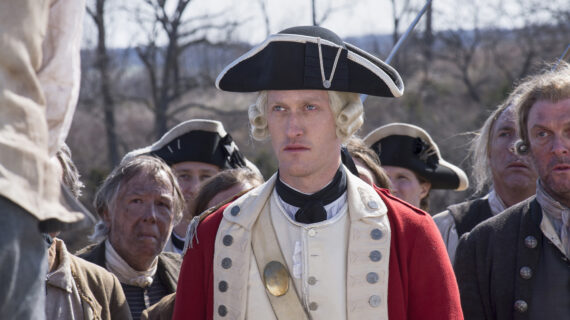

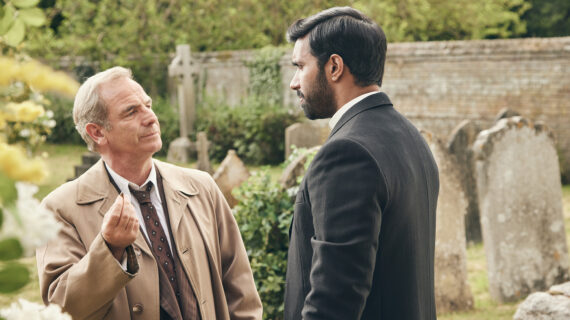
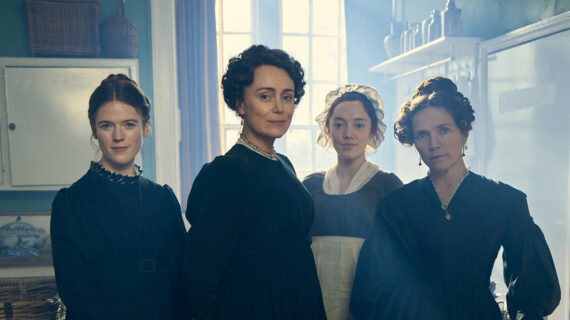

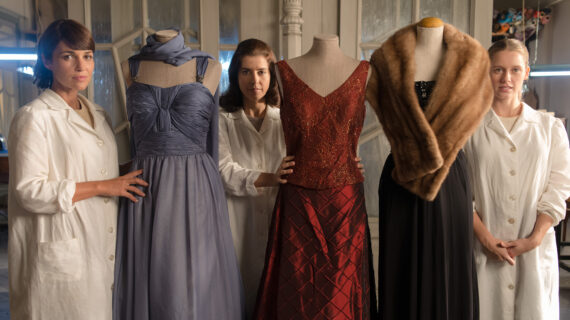
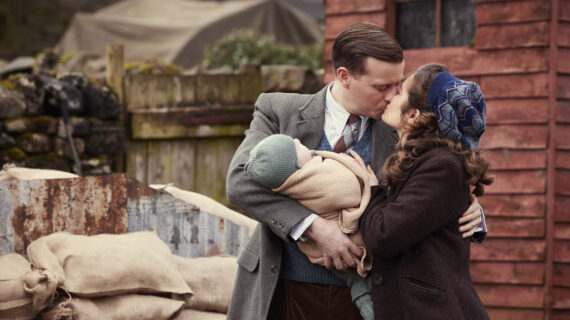

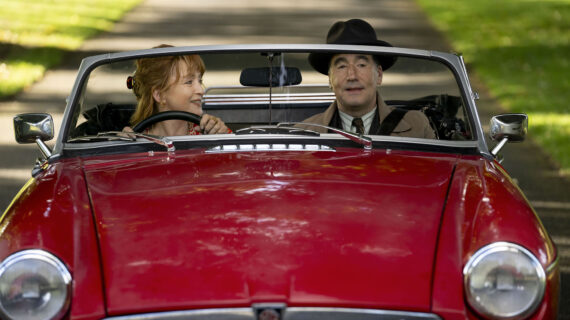

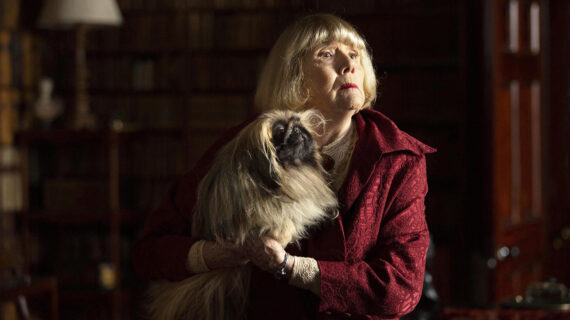

Follow Us